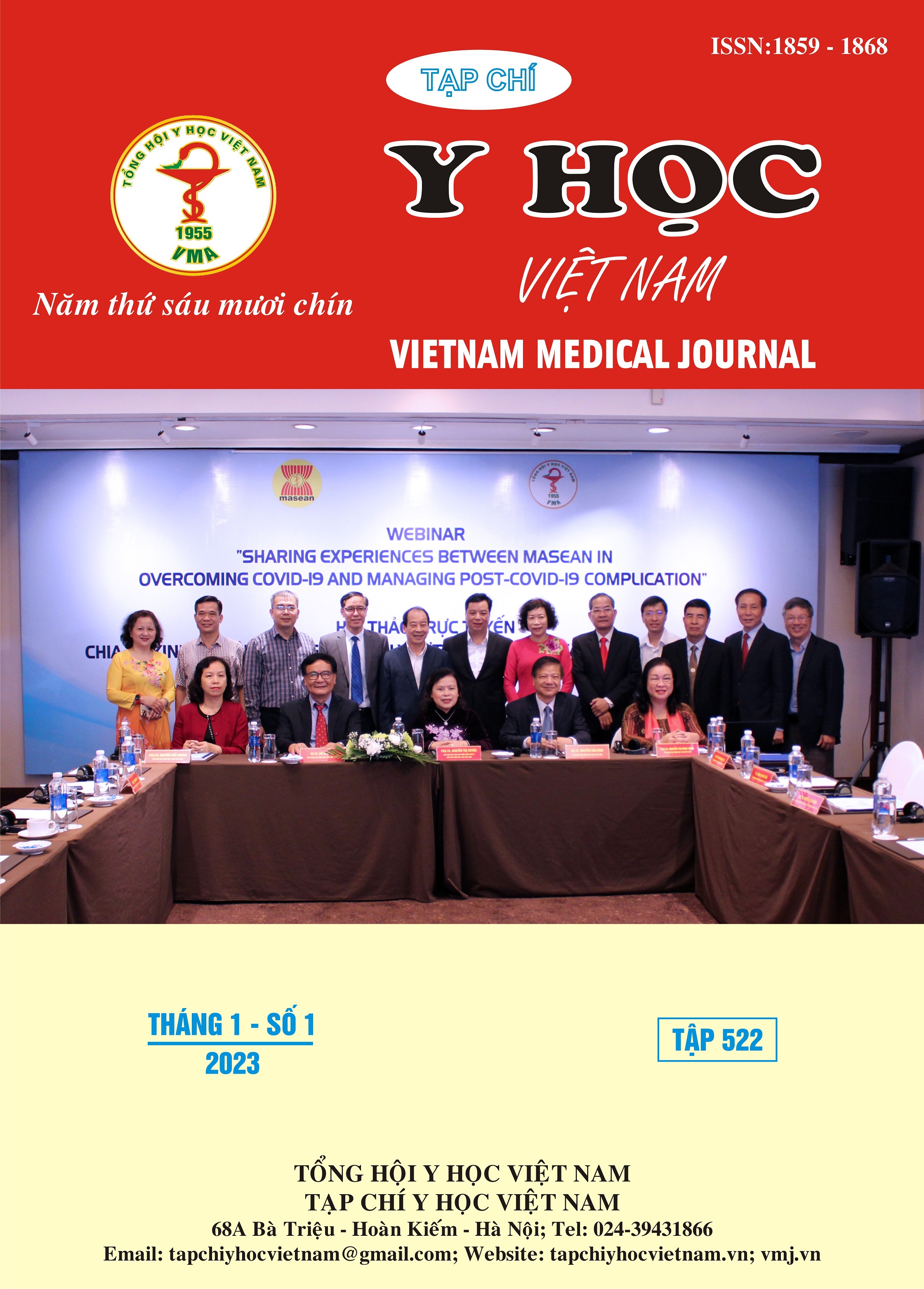OBSTRUCTED INTRACARDIAC TYPE OF TOTAL ANOMALOUS PULMONARY VENOUS CONNECTION: MID-TERM OUTCOMES OF SURGICAL REPAIR AT VIETNAM NATIONAL CHILDREN’S HOSPITAL
Main Article Content
Abstract
Objective: To evaluate the mid-term outcomes of surgical repair for obstructed intracardiac type of total anomalous pulmonary venous connection at Heart Center-Vietnam National Children’s Hospital. Methods: A retrospective study was conducted for evaluation of patients who underwent surgical repair with obstructed intracardiac type of total anomalous pulmonary venous connection at Heart Center-Vietnam National Children’s Hospital from March 2011 to May 2027. Results: A total of 17 patients were operated on during the study period. There were 12 males and 5 females. The mean age at operation was 97.7 ± 67.8 days, the mean weight was 4.5 ± 0.9 kg, and the mean BSA was 0.27 ± 0.1 m2. Two patients (11.8%) were admitted to the hospital with cardiogenic shock, 15 patients (88.2%) have respiratory failure, and 6 patients (35.3%) required mechanical ventilation before the operation. The Raskind procedure was applied in 4 patients (23.5%) before surgical repair due to hemodynamic unstable. The mean time of aortic cross-clamp time was 56.3 ± 32.2 minutes, and the mean time of bypass was 84.7 ± 38.9 minutes. The sutureless techniques were applied in two patients due to the restriction of the ostia connection between the pulmonary vein confluence and the coronary sinus. The conventional repair was applied in the remaining 15 patients. There were 4 patients (23.5%) have sinus bradycardia postoperative and required temporary atrial pacing, and 1 patient who had low cardiac output syndrome. The mean time of postoperative ventilation was 18.1 ± 27.7 hours, and 1 patient (5.9%) died at the hospital after reoperation due to stenosis of the anastomotic. During follow-up, all patients showed normal development, and only 1 patient who have mild stenosis of the individual pulmonary vein. Conclusions: Mid-term outcomes of surgical repair for obstructed intracardiac type of total anomalous pulmonary venous connection at Heart Center-Vietnam National Children’s Hospital are good. Further investigation with a bigger number of patients and longer follow-up are necessary.
Article Details
Keywords
obstructed total anomalous pulmonary venous connection, intracardiac type, mid-term outcomes
References
2. Shi G, Zhu Z, Chen J, Ou Y, Hong H, Nie Z, et al. Total Anomalous Pulmonary Venous Connection: The Current Management Strategies in a Pediatric Cohort of 768 Patients. Circulation. 2017 Jan 3;135(1):48–58.
3. Karamlou T, Gurofsky R, Al Sukhni E, Coles JG, Williams WG, Caldarone CA, et al. Factors Associated With Mortality and Reoperation in 377 Children With Total Anomalous Pulmonary Venous Connection. Circulation. 2007 Mar 27;115(12):1591–8.
4. St. Louis JD, Harvey BA, Menk JS, Raghuveer G, O’Brien JE, Bryant R, et al. Repair of “Simple” Total Anomalous Pulmonary Venous Connection: A Review From the Pediatric Cardiac Care Consortium. Ann Thorac Surg. 2012 Jul;94(1):133–8.
5. Xi L, Wu C, Pan Z, Xiang M. Emergency surgery without stabilization prior to surgical repair for total anomalous pulmonary venous connection reduces duration of mechanical ventilation without reducing survival. J Cardiothorac Surg. 2021 Dec;16(1):213.
6. Seale AN, Uemura H, Webber SA, Partridge J, Roughton M, Ho SY, et al. Total Anomalous Pulmonary Venous Connection. :9.
7. Padalino MA, Cavalli G, De Franceschi M, Mancuso D, Maschietto N, Vida V, et al. Surgical Outcomes of Total Anomalous Pulmonary Venous Connection Repair: A 22-Year Experience: SURGERY FOR TOTAL ANOMALOUS PULMONARY VENOUS CONNECTION. J Card Surg. 2014 Sep;29(5):678–85.
8. White BR, Ho DY, Faerber JA, Katcoff H, Glatz AC, Mascio CE, et al. Repair of Total Anomalous Pulmonary Venous Connection: Risk Factors for Postoperative Obstruction. Ann Thorac Surg. 2019 Jul;108(1):122–9.


